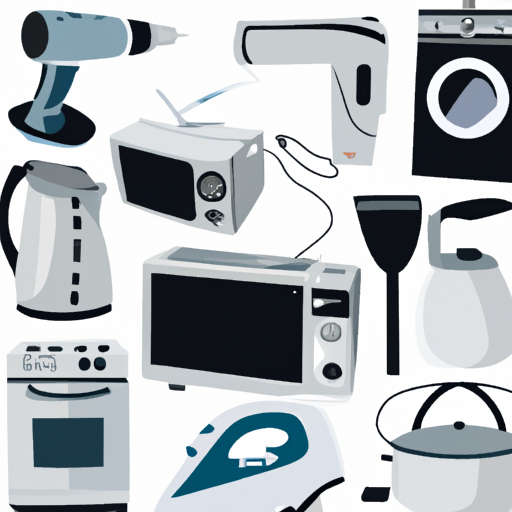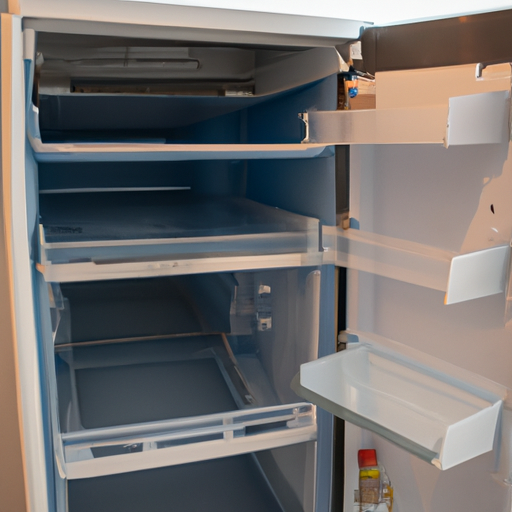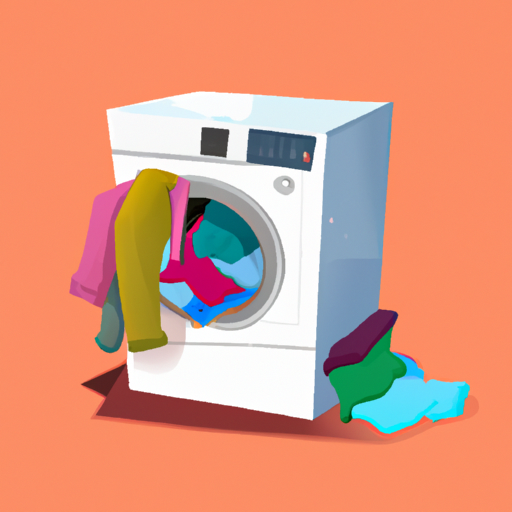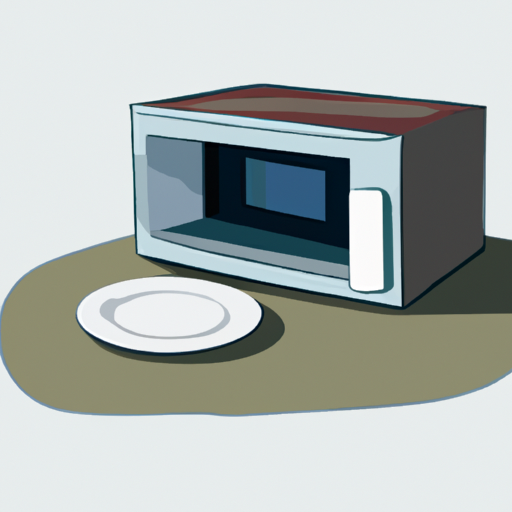
This blog post explores the common issues faced by homeowners and renters alike when dealing with appliances. It provides easy-to-understand solutions to these problems, empowering readers to tackle these issues themselves before resorting to professional help. From refrigerators to dishwashers, washing machines to ovens, this post covers a broad range of appliances and their most common malfunctions.
Understanding Your Appliances: An Overview?
Appliances play a crucial role in our daily lives, making our tasks easier and more convenient. From refrigerators to dishwashers, washing machines to ovens, these appliances have become an integral part of modern living. However, like any man-made object, appliances are prone to problems and malfunctions. Understanding the common issues that can arise with our appliances is essential for troubleshooting and finding solutions. In this blog post, we will provide you with an overview of common appliance problems and their solutions, empowering you to tackle these issues with confidence.
Appliances can fail for various reasons, including wear and tear, lack of maintenance, or electrical issues. By understanding the causes behind these failures, we can take proactive measures to prevent them. Some of the common causes include power surges, faulty wiring, improper usage, or simply old age. By being aware of these factors, we can ensure the longevity of our appliances and minimize the chances of encountering problems.
When it comes to specific appliances, each has its own set of unique issues. For example, refrigerators may experience problems such as insufficient cooling, leaks, or unusual noises. Dishwashers may fail to clean properly or leave spots on dishes. Washing machines can have issues with draining, spinning, or excessive vibrations. Ovens may have temperature inconsistencies or malfunctioning heating elements. Microwaves may stop heating food, while vacuums may lose suction power. Air conditioners may struggle to cool effectively, and freezers may fail to freeze properly. Understanding these appliance-specific problems will help us troubleshoot and find appropriate solutions.

An assortment of different home appliances
Why Do Appliances Fail? – A Look Into Common Causes
Appliances, like any other mechanical or electrical equipment, can fail for a variety of reasons. Understanding these common causes can help us prevent or address appliance failures effectively. One major cause is regular wear and tear due to prolonged usage. Over time, components can become worn or damaged, leading to malfunctions. Additionally, lack of proper maintenance can contribute to appliance failures. Neglecting regular cleaning, servicing, and replacing of worn-out parts can lead to decreased performance and ultimately, breakdowns.
Another common cause of appliance failure is power surges. Voltage spikes can occur during lightning storms or when there are fluctuations in the electrical grid. These surges can damage sensitive electronic components in appliances, rendering them inoperable. Faulty wiring is also a culprit behind many appliance failures. Loose connections, frayed wires, or improper installations can cause intermittent power supply or short circuits, leading to appliance malfunctions or even safety hazards.
Improper usage is another significant cause of appliance failures. Not following the manufacturer’s instructions, overloading appliances, or using them for purposes they were not designed for can put excessive strain on their components, leading to premature failures. Finally, age can also play a role in appliance failures. As appliances get older, their parts may degrade, making them more prone to malfunctions.
Fridge Frustrations: What’s Behind Your Refrigerator’s Problems?
When it comes to our refrigerators, encountering problems can be incredibly frustrating. However, understanding the common issues and their underlying causes can help us troubleshoot and resolve them effectively.
- 1. Temperature Fluctuations:
One common problem with refrigerators is temperature fluctuations. If you notice that your food is not staying as cold as it should or is freezing in certain areas, the first thing to check is the thermostat. A faulty thermostat can lead to inconsistent cooling, causing food spoilage or freezer burn. Additionally, dirty or blocked condenser coils can impede proper heat transfer, resulting in temperature irregularities. Regularly cleaning these coils can help maintain optimal cooling performance. - 2. Leaking Water:
Another common frustration is water leakage. If you find water pooling on the floor around your refrigerator, there could be several causes. A clogged or frozen defrost drain can cause water to overflow and leak onto the floor. Additionally, a damaged or misaligned water line can cause water to leak from the dispenser or ice maker. Checking and clearing the defrost drain and inspecting the water lines for any leaks or damage can help resolve this issue. - 3. Unusual Noises:
It’s not uncommon for refrigerators to make some noise during operation, but loud or unusual sounds can be cause for concern. A noisy compressor can indicate a faulty motor or fan, while a rattling noise might suggest loose components. Checking and tightening any loose parts or contacting a professional for motor or fan replacement can help address these issues. Additionally, excessive ice buildup in the freezer can lead to loud cracking or popping sounds. Regularly defrosting and removing ice buildup can help eliminate these noises.

A refrigerator with its door open revealing potential issues
Dishwasher Dilemmas: Why Isn’t Your Dishwasher Cleaning as it Should?
When your dishwasher fails to clean your dishes properly, it can be frustrating and time-consuming. There are several common issues that can cause this problem, but understanding the root causes can help you troubleshoot and resolve them effectively.
- 1. Clogged Spray Arms:
The spray arms in your dishwasher are responsible for distributing water and detergent to clean your dishes. Over time, these spray arms can become clogged with food particles, soap residue, and mineral deposits. When this happens, water cannot flow freely, resulting in poor cleaning performance. To resolve this issue, remove the spray arms and clean them thoroughly. Use a toothpick or small brush to unclog any debris from the spray holes. - 2. Malfunctioning Water Inlet Valve:
The water inlet valve controls the flow of water into your dishwasher. If this valve is faulty or clogged, it can restrict the water supply, leading to inadequate cleaning. You can check the water inlet valve by turning off the dishwasher’s power and inspecting it for any signs of damage or blockage. If necessary, replace the valve to restore proper water flow and improve cleaning performance. - 3. Dirty Filters:
Dishwashers have filters that trap food particles and debris to prevent them from clogging the drain. However, if these filters become dirty or clogged, they can restrict water flow and hinder the cleaning process. To address this issue, locate the filters in your dishwasher and remove them. Rinse them under running water to remove any accumulated debris. If the filters are damaged or excessively dirty, consider replacing them for optimal cleaning performance.
“The washer is acting up again!” – Common Washing Machine Issues
When your washing machine starts acting up, it can disrupt your laundry routine and cause frustration. Understanding the common issues that can occur with washing machines can help you troubleshoot and resolve them promptly.
- 1. Leaking:
One of the most common problems with washing machines is leaking. Leaks can occur from various sources, such as a faulty hose, worn-out pump, or damaged door seal. Inspect the hoses and connections for any signs of damage or loose fittings. If you notice a leak, tighten the connections or replace the faulty parts to prevent further water damage. - 2. Not Draining Properly:
If your washing machine is not draining water properly, it can be due to a clogged drain hose or a malfunctioning pump. Start by checking the drain hose for any obstructions or kinks. If the hose is clear, the issue may lie with the pump. Clean or replace the pump to ensure proper drainage. - 3. Noisy Operation:
Unusual noises during the washing machine’s operation can indicate various problems. These noises can be caused by a worn-out belt, loose drum bearings, or objects trapped in the drum. Inspect the belt for signs of wear and replace it if necessary. If the drum bearings are causing the noise, they may need to be lubricated or replaced. - 4. Not Spinning or Agitating:
When your washing machine does not spin or agitate, it can result in clothes coming out wet or poorly cleaned. This issue can be caused by a broken or worn-out motor coupling, a faulty drive belt, or a malfunctioning lid switch. Check these components and replace them if needed to restore proper spinning and agitation functions.

A washing machine with clothes sticking out
Oven Oddities: What’s Causing Your Oven Troubles?
An oven is an essential appliance in any kitchen, and when it starts giving you trouble, it can disrupt your cooking routine. Understanding the common issues that can occur with ovens can help you identify and resolve them promptly.
- 1. Uneven Heating:
One of the most common oven problems is uneven heating. If you notice that your baked goods are coming out with unevenly cooked or burnt spots, it could be due to a faulty heating element or temperature sensor. Check the heating element for any signs of damage or malfunction and replace it if necessary. Similarly, the temperature sensor may need to be calibrated or replaced to ensure accurate temperature readings. - 2. Inaccurate Temperature:
If your oven’s temperature is not matching the set temperature, it can affect the outcome of your recipes. This issue can be caused by a faulty thermostat or a malfunctioning control panel. Test the oven’s temperature using an oven thermometer to determine if it is accurate. If not, recalibrate the thermostat or replace it to ensure precise temperature control. - 3. Door Issues:
Another common problem with ovens is door-related issues. A loose or misaligned door can result in heat escaping from the oven, causing uneven cooking or longer cooking times. Check the door hinges and seals for any damage or misalignment. Tighten or replace the hinges and seals as needed to ensure a proper seal and efficient heat retention. - 4. Oven Not Heating:
If your oven is not heating at all, it can be frustrating. This problem can be caused by a blown fuse, a faulty heating element, or a malfunctioning control board. Start by checking the fuse and replacing it if necessary. If the heating element is damaged, it will need to be replaced. In some cases, a malfunctioning control board may require professional repair or replacement.
Microwave Mayhem: Why Isn’t Your Microwave Heating?
Microwaves are a convenient and time-saving appliance in any kitchen, but when they stop heating, it can be frustrating. There are several possible reasons why your microwave may not be heating properly.
- 1. Faulty Magnetron:
The magnetron is the component responsible for generating microwave radiation, which heats the food. If the magnetron is faulty or burned out, it will need to be replaced. This is a complex repair that should be carried out by a professional technician. - 2. Door Switch Issues:
Microwaves have safety mechanisms that prevent them from operating if the door is not securely closed. If the door switches are malfunctioning or misaligned, the microwave may not heat. Check the door switches and ensure they are properly aligned and functioning. If necessary, replace any faulty switches. - 3. Diode Malfunction:
The high-voltage diode in the microwave is responsible for converting the electrical current into the high-voltage required by the magnetron. If the diode is defective, it can cause the microwave to not heat. Test the diode using a multimeter, and if it is faulty, replace it with a new one. - 4. Capacitor Issues:
The capacitor stores electrical energy that is used to power the magnetron. If the capacitor is defective or not functioning correctly, it can prevent the microwave from heating. A faulty capacitor should be replaced by a professional technician as it involves working with high voltage components.

A microwave with a plate of cold food inside
Vacuum Vexations: What’s Stopping Your Vacuum From Cleaning?
Having a clean and functional vacuum is essential for maintaining a tidy home, but when it stops cleaning effectively, it can be a source of frustration. There are a few common issues that may be preventing your vacuum from cleaning properly.
- 1. Clogged Hose or Brush:
One of the most common culprits behind a poorly performing vacuum is a clogged hose or brush. Over time, debris such as hair, dust, and small objects can get stuck in the hose or brush, blocking the airflow and reducing suction power. Regularly check and clean these components to ensure optimal performance. - 2. Full Dust Bag or Canister:
If your vacuum has a dust bag or canister, it’s important to empty or replace it regularly. When the bag or canister is full, airflow is restricted, and the vacuum’s cleaning efficiency is compromised. Make it a habit to check and empty the dust bag or canister before it becomes too full. - 3. Dirty Filters:
Vacuum cleaners usually have one or more filters that trap dust and particles. Over time, these filters can become clogged with dirt and debris, reducing airflow and suction. Refer to your vacuum’s manual to locate the filters and clean or replace them as necessary. - 4. Worn or Damaged Brush Roll:
The brush roll, also known as the beater bar, is responsible for agitating and loosening dirt from carpets and rugs. If the brush roll is worn or damaged, it won’t be able to effectively clean your floors. Inspect the brush roll regularly and replace it if necessary. - 5. Broken or Loose Belts:
Vacuum cleaners may have belts that drive the brush roll. If these belts are broken or loose, the brush roll will not spin properly, resulting in poor cleaning performance. Check the belts for any signs of damage or looseness and replace them if needed.
Air Conditioner Anomalies: Why Isn’t Your AC Cooling?
An air conditioner that fails to cool properly can be a real headache, especially during hot summer months. There are several common reasons why your AC may not be cooling effectively.
Firstly, a dirty or clogged air filter can restrict airflow and reduce the cooling capacity of your AC. Over time, dust, dirt, and other particles can accumulate in the filter, blocking the air from flowing freely. This can result in reduced cooling performance or even complete failure of the AC unit. Regularly cleaning or replacing the air filter can help ensure proper airflow and optimal cooling.
Secondly, low refrigerant levels can also cause your AC to struggle with cooling. Refrigerant is the substance responsible for absorbing heat from the air and cooling it down. If there is a leak or a refrigerant deficiency, your AC will not be able to cool the air effectively. It is important to have a professional technician inspect and recharge the refrigerant levels if needed.
Lastly, a malfunctioning compressor is another common culprit behind AC cooling issues. The compressor is the heart of the AC system and is responsible for circulating refrigerant and compressing it to cool the air. If the compressor is faulty or damaged, it may not be able to effectively cool the air, resulting in poor cooling performance. In such cases, it is advisable to seek professional assistance to diagnose and repair the compressor.

An air conditioner unit with warm air coming out
Fighting Freezer Failures: Is Your Freezer Not Freezing?
When your freezer fails to freeze, it can be a major inconvenience and potentially lead to food spoilage. There are several possible reasons why your freezer may not be functioning properly.
First, check the temperature settings on your freezer. It is possible that the temperature control knob or digital display may have been accidentally adjusted or malfunctioned, causing the freezer to not reach the desired freezing temperature. Ensure that the temperature is set to the recommended range, typically between 0 to -10 degrees Fahrenheit (-18 to -23 degrees Celsius).
Next, check the freezer door seal or gasket. A worn-out or damaged door seal can allow warm air to enter the freezer, preventing it from reaching the required cold temperature. Inspect the gasket for any signs of wear, cracks, or gaps. If necessary, replace the door seal to ensure a proper seal and optimum freezing performance.
Another possible cause of freezer failures is a malfunctioning defrost system. Over time, frost can build up on the evaporator coils, preventing the freezer’s ability to cool properly. A faulty defrost system may not be effectively removing the frost, leading to inadequate freezing. Check the defrost timer, thermostat, and heater for any malfunctions and replace if necessary.
Additionally, a freezer that is overcrowded can also inhibit proper freezing. When there is limited space for air circulation, the freezer may struggle to maintain the required temperature. Consider organizing and removing any unnecessary items to allow for proper airflow.
Finally, a malfunctioning compressor or refrigerant leak can also affect the freezing capabilities of your freezer. If the compressor is not running or there is a refrigerant leak, the freezer may not be able to cool effectively. In such cases, it is best to contact a professional technician to diagnose and repair the issue.
Common Appliance Problems and Solutions:
| Appliance | Problem | Solution | Professional Help |
|---|---|---|---|
| Refrigerator | Not cooling | Check temperature controls and clean condenser coils | Yes, if the problem persists |
| Dishwasher | Not draining water | Check the drain hose or contact a plumber | Yes, if the problem persists |
| Washing machine | Makes loud noises | Check for clogs in the pump or failing motor | Yes, if the problem persists |
| Oven | Not heating up | Check the heating element and thermostat | Yes, if the problem persists |
Applying the remedies discussed in this post can help you troubleshoot some of the most frequent appliance issues. While these solutions may not work for every situation, they are a good starting point. If your problem persists, it’s best to consult with a professional to avoid causing more serious damage. Remember, understanding your appliances and their common issues is the first step in extending their life and functionality.
Recent Comments